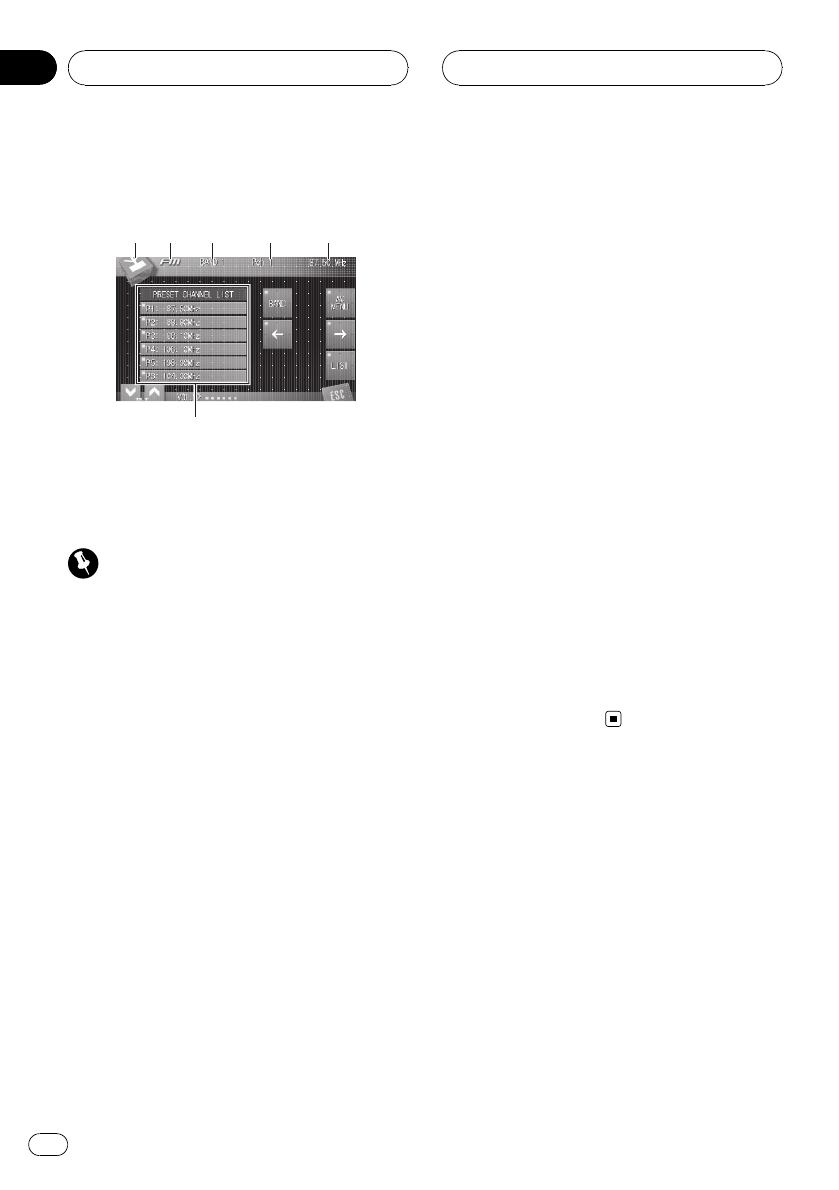
Listening to the radio
1
1
1
3
3
3
4
4
4
6
6
6
2
2
2
5
5
5
These are the basic steps necessary to operate
the radio. More advanced tuner operation is
explained starting on the next page.
Important
If you are using this unit in North, Central or
South America, reset the AM tuning step (see
Setting the AM tuning step on page 108).
1 Source icon
Shows which source has been selected.
2 Source name
Shows the selected source name.
3 Band indicator
Shows to which band the radio is tuned
when FM is selected as the source.
4 Preset number indicator
Shows which preset has been selected.
5 Frequency indicator
Shows the frequency to which the tuner is
tuned.
6 Preset list display
Shows the preset list.
1 Touch the source icon and then touch
FM or AM to select the tuner.
2 Touch BAND to select a band when FM
is selected as the source.
Touch BAND repeatedly until the desired band
is displayed, BAND 1, BAND 2 or BAND 3.
3 To perform manual tuning, briefly
touch c or d.
The frequencies move up or down step by
step.
# You can also perform manual tuning by mov-
ing the joystick left or right.
4 To perform seek tuning, keep touching
c or d for about one second and release.
The tuner will scan the frequencies until a
broadcast strong enough for good reception is
found.
# You can cancel seek tuning by briefly touching
either c or d.
# If you keep touching c or d you can skip
stations. Seek tuning starts as soon as you re-
lease the key.
# You can also perform seek tuning by holding
the joystick left or right.
Storing and recalling
broadcast frequencies
If you touch any of the preset tuning keys P1
to P6 you can easily store up to six broadcast
frequencies for later recall with the touch of a
key.
% When you find a frequency that you
want to store in memory keep touching
one of preset tuning keys P1 to P6 until the
beep sounds.
The selected radio station frequency has been
stored in memory.
Tuner
En
28
Section
05


















